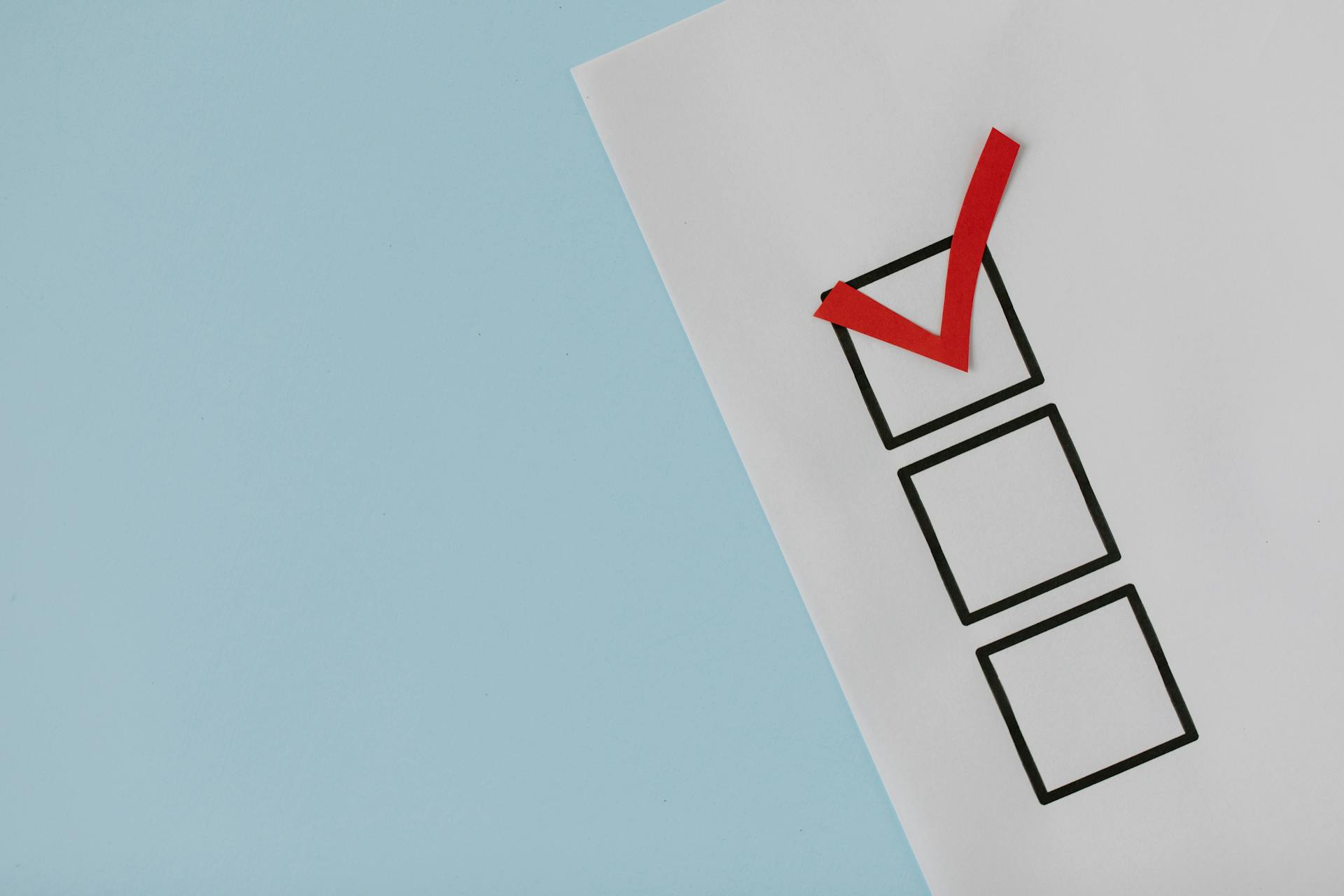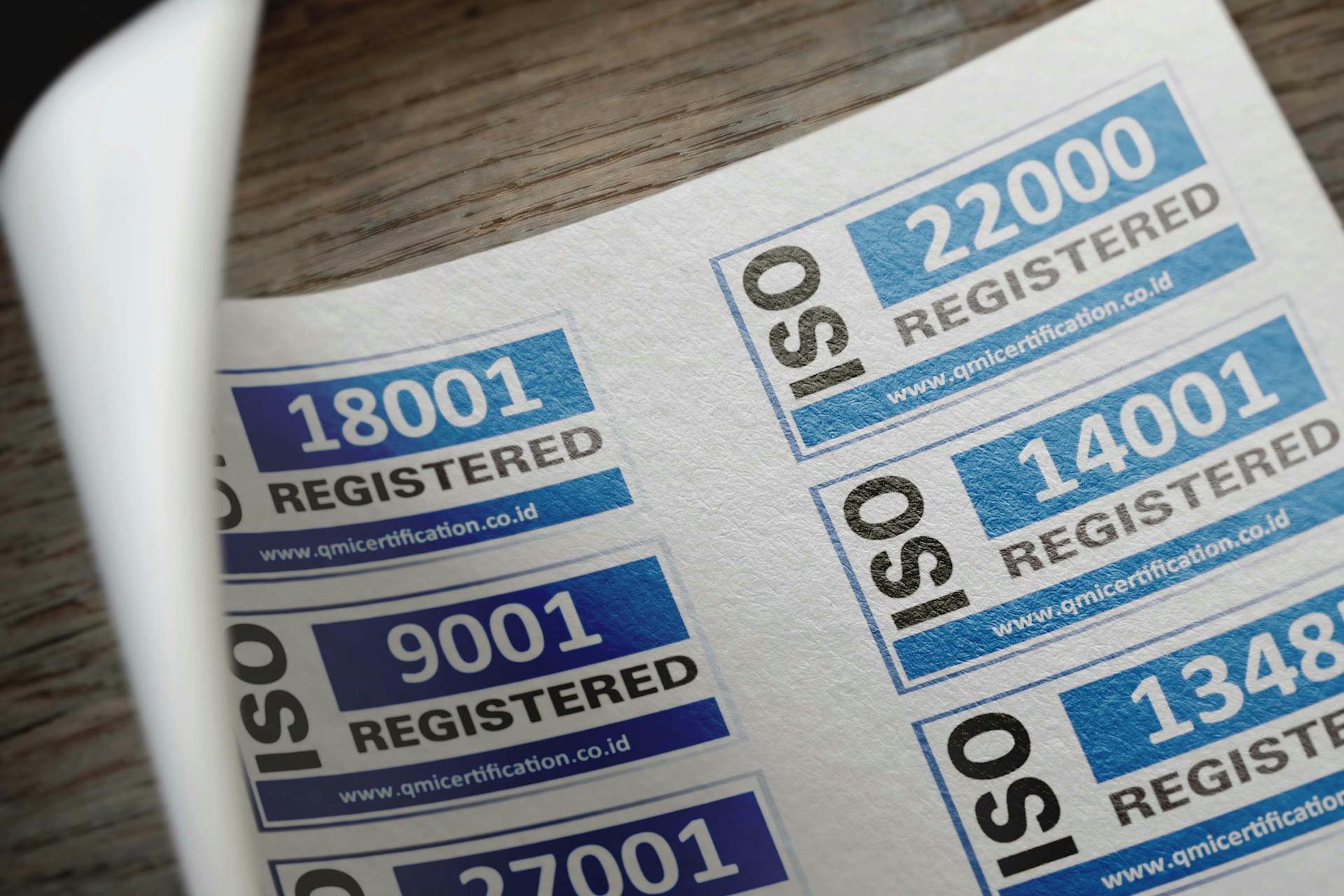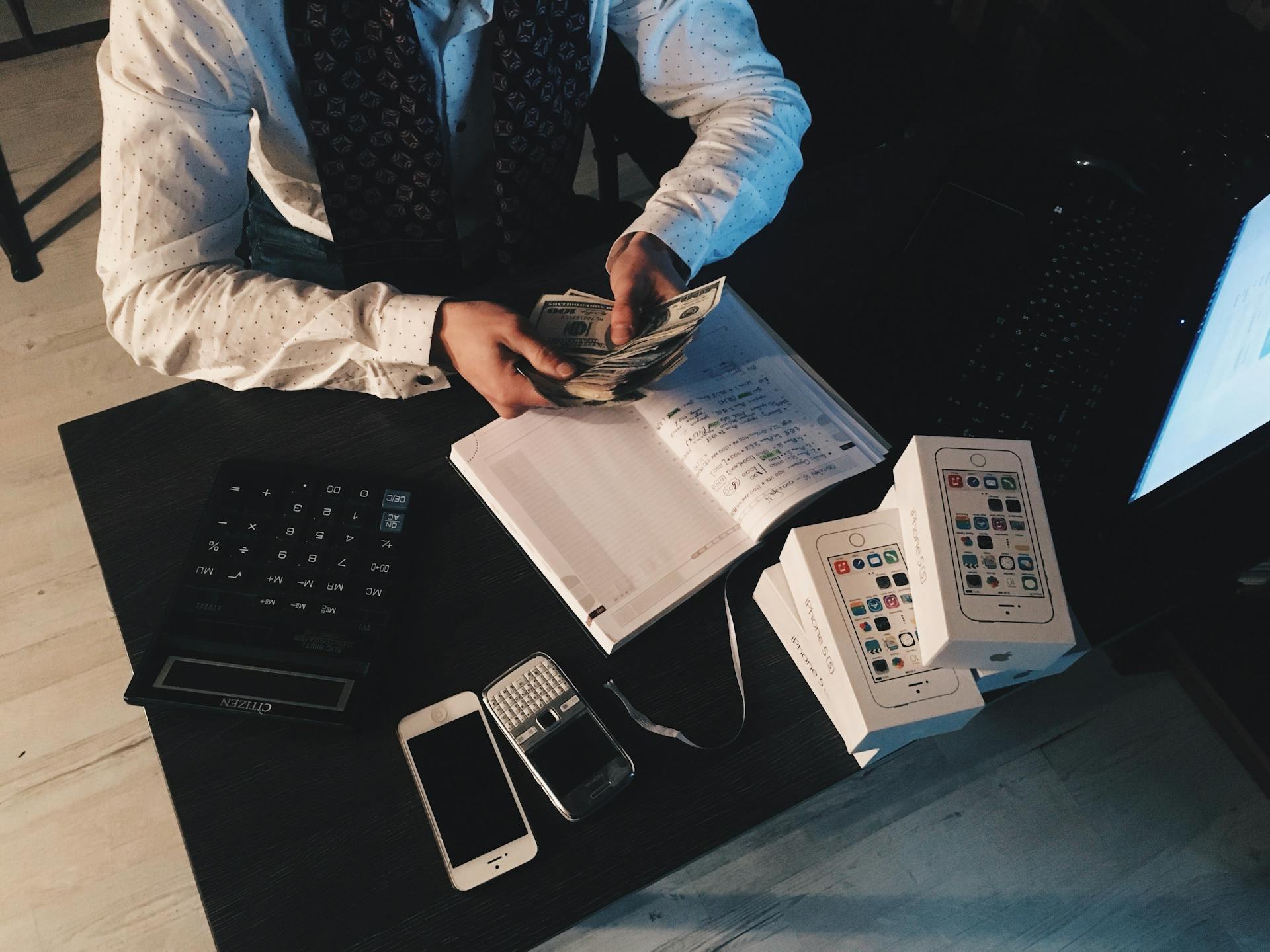
A certified check is a type of check that's guaranteed by the bank, but how do you know if it's real and legitimate?
First, look for the certification stamp on the check. This stamp is usually located in the top right corner and indicates that the bank has verified the check's authenticity.
The certification stamp will typically include the bank's name, the check number, and the date. It's essential to verify this information with the bank to ensure it matches their records.
A certified check will also have a unique certification number, which can be used to verify the check's authenticity with the bank.
On a similar theme: How to Buy a Bank Check
Detecting Counterfeit Checks
Fake checks can be convincing, but there are some red flags to look out for. A fake check may have smooth edges, indicating it was printed on a computer.
Check the bank logo on the front of the check. If it's missing or faded, the check could be a fake. A genuine check will have a clear, well-defined logo.
Examine the MICR line at the bottom of the check. If it's shiny or the ink is raised, the check is likely a fake. The MICR line should be dull and print smoothly.
Here are some key things to check on a check to ensure it's real:
- Check number at the top right-hand corner matches the MICR line
- MICR line is dull and prints smoothly
- Check has a consistent signature
- Check is printed on thick, sturdy stock paper
Verify Security Threads
Verify Security Threads is a crucial step in detecting counterfeit checks.
Security threads are embedded in genuine checks to prevent counterfeiting.
These threads can be seen under UV light, which makes them harder to replicate.
In the US, the majority of checks have a security thread that glows pink or blue under UV light.
A common type of security thread is the "windowed thread" that appears as a thin line on the check.
This thread can be removed or tampered with on a counterfeit check, making it easier to identify.
Verify the Check Number
To verify a check number, you can check the MICR line at the bottom of the check. The MICR line contains the check number, account number, and routing number.
The check number is usually a unique 6- or 9-digit number that can be found in the MICR line.
The check number is also printed on the front of the check, usually in the top right corner.
A counterfeit check may have a check number that doesn't match the account number or routing number in the MICR line.
Always verify the check number against the account information to ensure it's legitimate.
Here's an interesting read: What Is a Checking Account
6 Ways to Spot a Fake
Spotting a fake certified check can be a challenge, but there are some telltale signs to look out for. A legitimate check usually has a legitimate bank name and address, and the bank number should match the one on the MICR line.
If the check has a smooth edge, it might be a red flag. Most checks have at least one rough or perforated edge because they were torn out of a checkbook. The check number should also match the MICR line, and the MICR line should be dull and smooth to the touch.
You might enjoy: What Bank Does Not Check Chexsystems
The bank logo should be clear and not faded or faint. If it's missing or looks copied, it could be a sign of a fake check. You can also check the paper quality - real checks are typically printed on thick, sturdy stock paper.
A consistent signature is another important aspect to check. If the signature has gaps, looks digital, or has shaky pen strokes, it might be a sign of a forgery. Finally, be on the lookout for typos and missing information - a few irregularities can be a sign of a fake check.
Here are some key things to check when verifying a certified check:
- Legitimate bank name and address
- Matching check number and MICR line
- Dull and smooth MICR line
- Clear and not faded bank logo
- Thick and sturdy paper quality
- Consistent signature
- No typos or missing information
Frequently Asked Questions
Is it safe to accept a certified check?
Yes, certified checks are considered safer than personal checks, as they ensure the funds are available before clearing. This added security makes certified checks a reliable payment option.
Sources
- https://www.thebalancemoney.com/how-to-check-a-check-315428
- https://www.wellsfargo.com/privacy-security/fraud/bank-scams/fake-check-scams/
- https://www.aarp.org/money/scams-fraud/info-2020/fake-check.html
- https://www.wikihow.com/Spot-a-Fake-Check
- https://www.gobankingrates.com/banking/checking-account/how-verify-cashiers-check/
Featured Images: pexels.com


